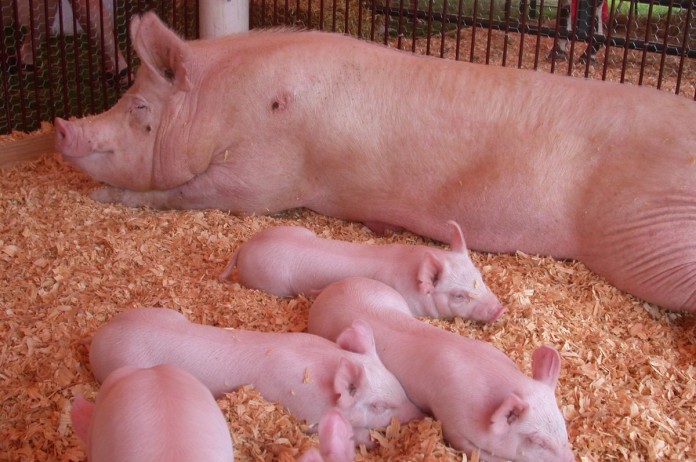MANHATTAN, Kan. — U.S. pork producers are transitioning away from using individual gestation crates and instead housing gilts and sows in groups.
But the change poses challenges, including the ability to monitor feed consumption for each animal.
To remedy that, producers have started using electronic sow feeding systems (ESF) in their farms.
Even when sows or gilts are kept together in large groups, ESF systems allow animals to move into individual feeding stations one at a time.
Once a sow enters a station, the gate locks behind her and she is identified electronically by a transponder in her ear tag. The computer-controlled feeder dispenses the specific amount of feed allotted for that animal.
The sow may leave at any time, ending the dispensing of feed and unlocking the entrance for the next sow.
Training pigs
Kansas State University researchers along with K-State graduate students Lori Thomas and Carine Vier conducted studies at a cooperator swine operation using ESFs to look at feed efficiency by stage of gestation and to examine the importance of training gilts and sows to use such systems before they are bred and begin gestation.
The studies followed 300 gilts and 550 sows.
“To our knowledge, no one has ever looked at gestation feed efficiency by stage of gestation, and we thought it would help with determining nutrient requirements and feeding recommendations,” said K-State animal science professor Bob Goodband.
“As the swine industry transitions to group housing, computerized feeding programs will offer opportunities to really fine tune gestation feeding programs for sows.”
In one of the studies, gilts spent 10 weeks in pre-training, two weeks in training, then moved into post-training when the animals were bred and moved into gestation.
The cooperator farm had six ESF feeding stations per pen. The researchers were looking at patterns of feed intake and growth of animals.
Training the gilts to use this system is important to meet their nutritional needs after they’ve been inseminated and go through gestation in the ESF pens, said Goodband, who is a nutrition specialist with K-State Research and Extension.
Feed efficiency
The cooperator farm had implemented a fairly simple feeding program for determining the amount of feed to provide gestating sows and it worked well, he added.
In the study, gilts received 4.4 pounds of feed per day and sows received 5 pounds. Once gilts and sows finished at a feeding station, they walked through an alley and over a scale where each animal was weighed.
One thing that surprised the researchers was that the sows and gilts did not eat their full feed allotment or gain much weight in the first 10 days in the pen.
After the first 10 days, each sow and gilt generally consumed her whole ration.
“We found significant changes in average daily weight gain following the initial 10 days in the pen. Thereafter, females were consistently eating and gaining for the remainder of gestation,” said Thomas, the graduate student in charge of the study.
“Our results, I think, share a very important message that even with a good training program, gilts and sows appear to struggle within those first few days of introduction into the gestation pen. It doesn’t take long before they become adjusted and are up to full feed but it is important for producers to be aware of this.”
Nutrition
Thomas said, the main questions they hope to answer is, “Will these changes in initial feed intake affect subsequent reproductive performance?'”
The team plans to study nutrient requirements during gestation in the spring.
The ESF system provides a model to determine the rate at which a sow adds lean muscle and fat that can be tied back into a nutrition program, said Goodband.
“There is a lot of excitement on the data that has been generated and will continue to be generated from this system and many other similar systems,” he added.
“Improving our knowledge of the pregnant sow and how to properly meet her nutrient requirements in gestation, have her enter into the farrowing house ready to farrow and successfully nurse a vigorous litter of piglets is a goal we hope to achieve.”












